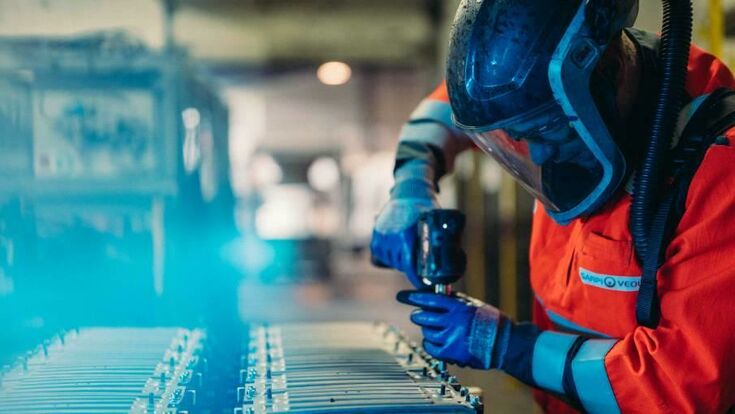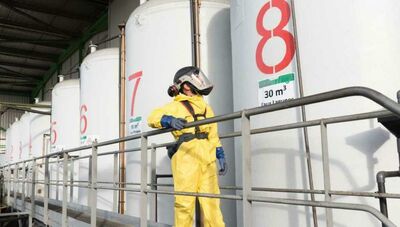Veolia's Pascal Muller says : “We are leader in the field of battery recycling”

What is Veolias USP in collection and securing and fully discharging the batteries?
The first steps of battery management are carried out on the EDI site in Dieuze. The residual energy contained in the battery first requires discharging it, either electrically or electrolytically when the charge/discharge terminals are no longer operational. This particularly delicate operation requires very precise operating procedures carried out by trained teams with appropriate authorizations
What are Veolias solutions in the dismantling of the batteries?
The secured batteries are then dismantled. The cables, the cooling system and other insulators which represent around 30% of the initial mass of the battery are removed and recycled in suitable sectors. The modules, the electric current generating elements, are removed and continue the recycling process. The modules (70% of the weight of the battery) are made up of the materials necessary for the production of energy: the electrodes (aluminum and copper sheets), the solvent electrolytes, the active materials (cobalt, nickel, manganese and lithium), as well as the separators.
Related article: Battery recycling: an industry taking the driver's seat
What happens after grinding?
After grinding, the solvents are extracted from the solid matrix. This fraction is then directed into a mechanized separation unit which allows each constituent to be selectively recovered.
After separation, we mainly find aluminum fines, copper, and stainless steel shavings for 10%, the polymers constituting the separation membranes for 15% and the active material commonly called “black mass” which contains the all strategic metals: nickel, cobalt and lithium.

What are Veolias solutions in separation and hydrometallurgical processing the components?
Veolia is a global player, leader in its field, and recognized in the treatment and recovery of hazardous waste. Through its battery recycling activities (Euro-Dieuze Industrie - EDI - in Dieuze in Moselle, BATREC in Switzerland), Veolia has developed hydrometallurgical recycling solutions for the metals contained in Nickel/Cadmium batteries and has deployed processes for valorizing Li-ion batteries from D3E and new electric vehicle battery technologies. Through its CEDILOR site in Amnéville (Moselle), has units dedicated to the extraction of metals contained in other types of waste (sludge metallurgical products, catalysts, chemical effluents), in particular for nickel and zinc.
Related article: “The construction of appropriate EV battery recycling facilities should begin now”
The process to refine the precious components is based on the know-how developed over many years around the recycling of metal-bearing waste by chemical means: catalysts from chemistry and petrochemicals, portable batteries, effluents from surface treatments, etc.
How does Veolia refine the precious components?
The process developed is based on the know-how developed over many years around the recycling of metal-bearing waste by chemical means: catalysts from chemistry and petrochemicals, portable batteries, effluents from surface treatments, etc. The objective is to selectively extract nickel, cobalt and lithium in the form of mono-metallic salts that can be reused in the production of new batteries. The co-products thus obtained have characteristics compatible with their reuse in refining processes to replace natural resources. Depending on their degree of purity, they can be reinjected throughout the battery manufacturing line, either at technical grades upstream of the metal sulfate production processes, or refined, to manufacture precursors.
What is the planned scope of the venture (geographical and value growth)?
The new hydrometallurgical recycling unit is located on the Cedilor site in Amnéville. After a gradual increase in power, the unit should be able to recycle at full capacity of around 7,000 tonnes of black mass, or the equivalent of 60,000 batteries. The start of the installation is planned for the end of 2023.
Related article: EV Battery Recycling: Baby, I can recycle your car!
Why is your investment in this area so important?
Recycling electric vehicle batteries is crucial to reducing environmental impacts, preserving natural resources, fostering a circular economy and supporting the transition to more sustainable mobility. According to a Eurostat study carried out in 2020, transport represents 23.2% of sources of greenhouse gas (GHG) emissions in Europe, equivalent to the energy production sector (23.3%). . In comparison, waste management emits 3.3% of GHGs. Among the different modes of transport, road transport predominates over all others, in terms of the volume of travel and the energy used. To reduce the impact of transport on the environment and achieve the objective of carbon neutrality in 2050, European governments have committed to the development of electric mobility. As such, end-of-sale targets for new passenger cars and light commercial vehicles using fossil fuels have been set in different countries. They are accompanied by ambitious objectives for the production of electric vehicles.
What are the capacity targets?
In France, for example, a production target of 2 million electric vehicles per year by 2030 has been set. It is therefore a question of producing in electric models the equivalent of all the vehicles sold annually in France, all types combined. To ensure the production of these electric vehicles, the development of Gigafactories (battery manufacturing plants) will need to reach an annual capacity of approximately 140 to 160 GWh of electrical power, or 2 million batteries.
Related article: Japanese researchers succeed in extracting rare metal from lithium-ion batteries

